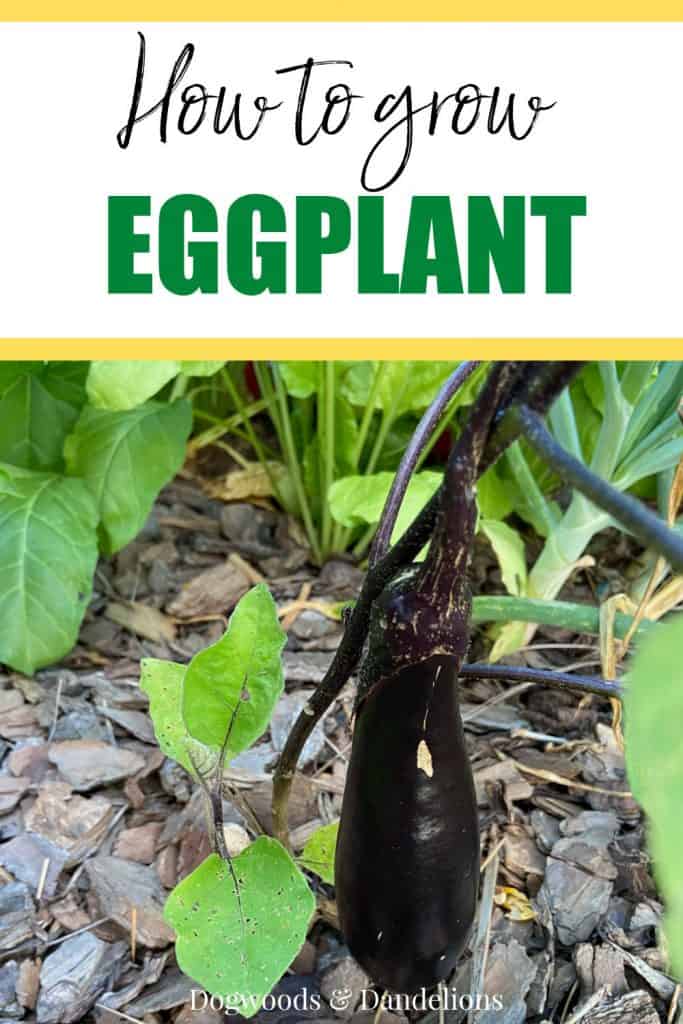How to Grow Eggplant
While eggplant (solanum melongena) may not be the first vegetable gardeners think about growing, eggplant is easy to grow in your backyard garden. The flavor of homegrown eggplant is outstanding and there are so many unusual varieties to try. Learn how to grow eggplant in your own garden this year.
Affiliate Disclosure: Please note that some of the links in this article may be affiliate links and I may receive a small commission if you purchase something through a link. It will not change your cost. As an Amazon Associate, I earn from qualifying purchases. For more information, see my disclosures page.)
How to Start Eggplant Seeds Indoors
Eggplant seeds do best when starting the seeds indoors unless you plan to purchase plants from your local store.
Eggplant should be started 6-9 weeks before your last expected spring frost. The seeds can be a bit finicky to get started, so a heat mat will help increase germination.
Plant 1-2 seeds in each pot 1/4″ deep. Soaking the seeds overnight can help them germinate faster. This is especially helpful if you don’t have a heat mat.
Once the seeds sprout, place them under grow lights with the top of the plant 2″ from the lights. (These are my favorite grow lights. They have improved the quality of my starts dramatically.)
Don’t transplant seedlings to the garden until after your last frost date. You can find your first and last frost dates here.
How to Grow Eggplant in the Garden
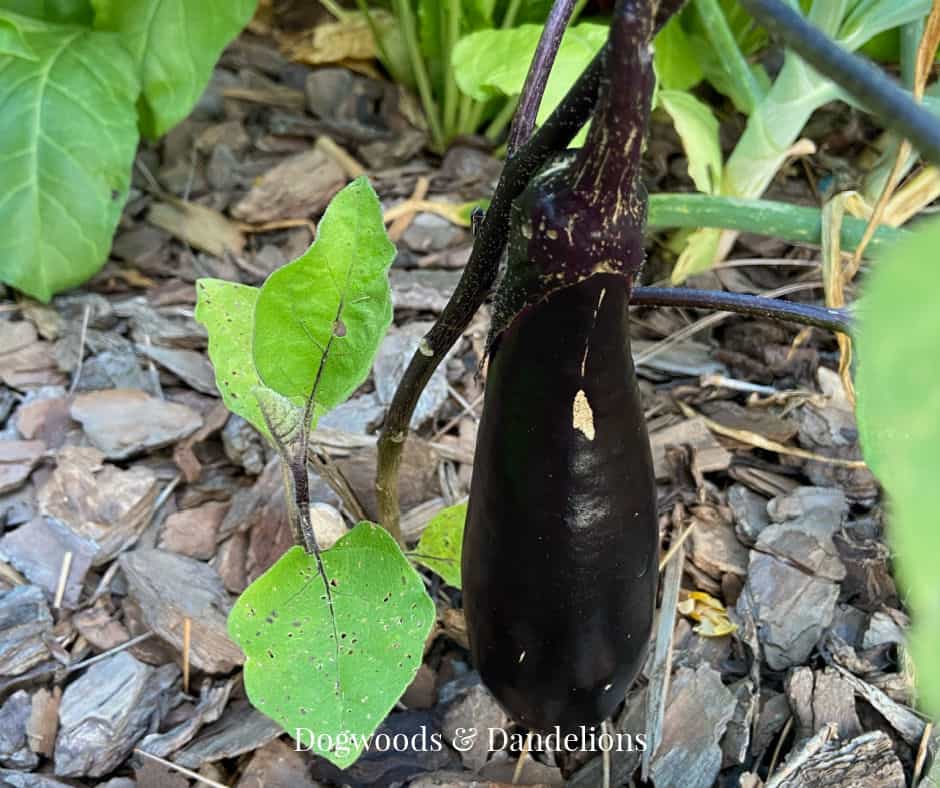
Eggplant is best planted in the garden as transplants. If you don’t want to start the seeds yourself, purchase plants from your local garden center or home improvement store.
Eggplant is a warm-season vegetable so it should be planted outdoors in full sun after all danger of frost has passed in the spring. The plants do best when the soil temperature is at least 50 degrees.
Cold temperatures can stunt the growth of the plants and leave them more susceptible to insects and disease. In cooler climates, using black plastic mulch can be beneficial to warm up the soil before planting.

Eggplant seedlings should be planted 18 to 24″ inches apart in fertile, well-drained soil. They are heavy feeders so adding plenty of organic matter to the soil will ensure a larger harvest.
You can underplant eggplant with cooler weather crops such as lettuce, spinach, and radishes if you prefer. If you are using the square foot gardening method, you can plant the smaller varieties in one square.
Mulch the plants well to keep the soil moisture consistent and to keep the weeds out. Fertilize eggplant when the plant blooms and side dress again when the plants start fruiting heavily. This is my favorite organic fertilizer.
Eggplants generally need to be staked or caged to keep the plants from breaking under the weight of the fruit unless you are growing compact varieties. A tomato cage works really well for eggplant.
Eggplant is a member of the nightshade family just like tomatoes, potatoes, or peppers so the plants are susceptible to the same diseases. Don’t plant them in the same place 2 years in a row.
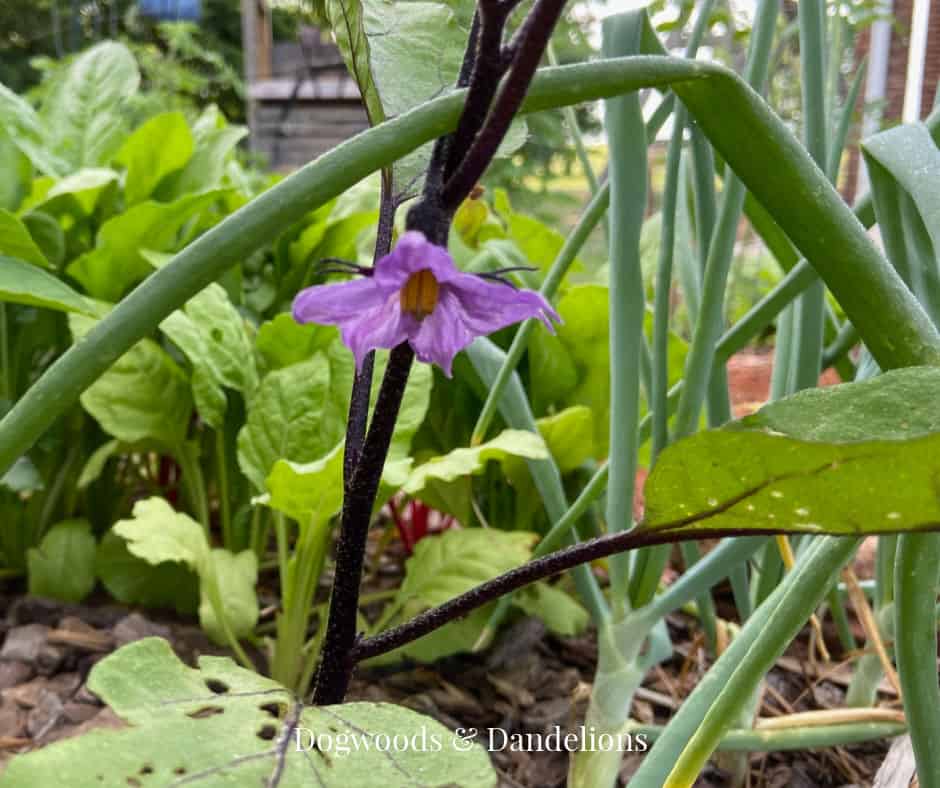
How to Grow Eggplant in Containers
Eggplant makes a great vegetable to grow in containers. Most varieties can be grown in 5-gallon pots or grow bags. Growing eggplant in a sunny spot on a deck or patio can help prevent flea beetles from finding them too. (See more about flea beetles below.)
Keep the containers evenly moist and don’t let the soil dry out. This may mean watering every day. If the containers seem to be drying out too quickly, you can move the plants to an area that gets afternoon shade.
How to Harvest Eggplant
Harvest eggplants when they are a mature size and have developed glossy skin. The best way to remove them from the plant is with a sharp knife, scissors, or pruners leaving the cap and about an inch of the stem with the eggplant.
Don’t leave the eggplant fruits on the plant any longer than necessary or they will turn bitter. It is much better to pick eggplant too young rather than too old.
If you cut into an eggplant and find dark brown seeds, it was left on the plant too long and is most likely bitter. Pick a bit earlier next time.
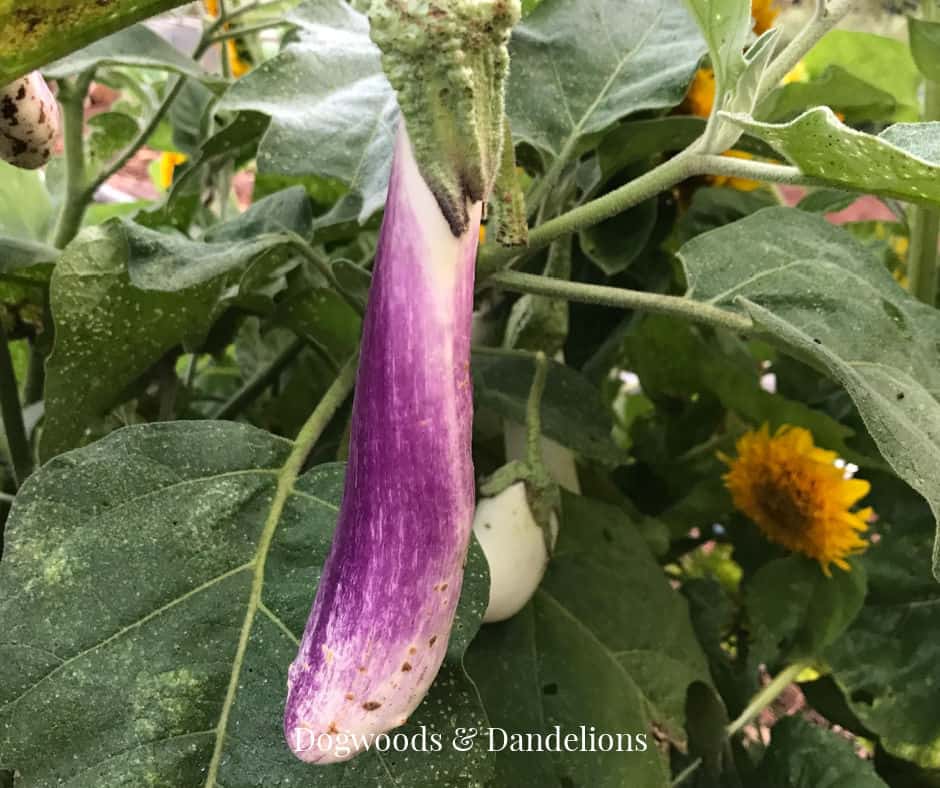
You can store eggplant in the refrigerator for about 10 days. Eggplant isn’t suited for canning but it can be preserved by dehydration.
If you want to freeze eggplant, it is best to cook it first and then freeze it. Pick Your Own has a great tutorial on how to freeze eggplant.
Common Insects & Diseases of Eggplant
Like most vegetables, insects love to munch on eggplant. The most common insects to attack your eggplant are flea beetles. Their favorite thing to eat are the leaves on the plants.
You will likely notice tiny holes in the leaves before you actually see the eggplant flea beetles. To deter them, you can cover the plants with row covers.
Eggplants are self-pollinating so you don’t have to remove the row cover when the flowers form, however, you will likely get higher yields if you do. Bee activity will increase pollination. For more information on how eggplants are pollinated, check out this article from Gardening Know How.
To prevent flea beetle damage you can also try dusting the eggplant leaves with kaolin clay or spray with spinosad. Though these are both approved for organic gardening, before using any pesticide or insecticide in your garden, please do your own research to be sure you are comfortable using it.
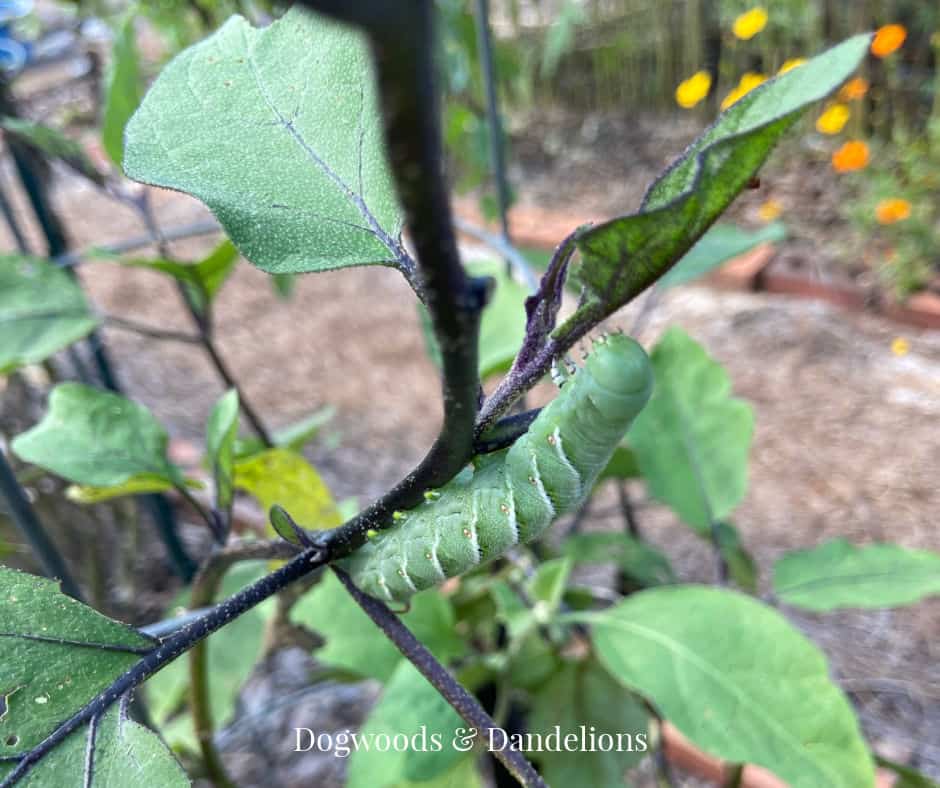
Other insects that like to feast on eggplant include spider mites, potato beetles, and tomato hornworms. Neem oil usually works to control spider mites. For potato beetles and hornworms, I prefer to just handpick them and kill them or drop them in a bucket of soapy water.
The most common disease that impacts eggplant is verticillium wilt. Verticillium wilt is a fungus that lives in the tissues of plants blocking water intake through the plant.
It also releases a toxin that can poison the plant. It is found in the soil and enters the plants through the roots. If you have a problem with verticillium wilt it is best to plant resistant varieties.
And be sure to practice proper crop rotation. Tomatoes are also extremely susceptible to verticillium wilt.
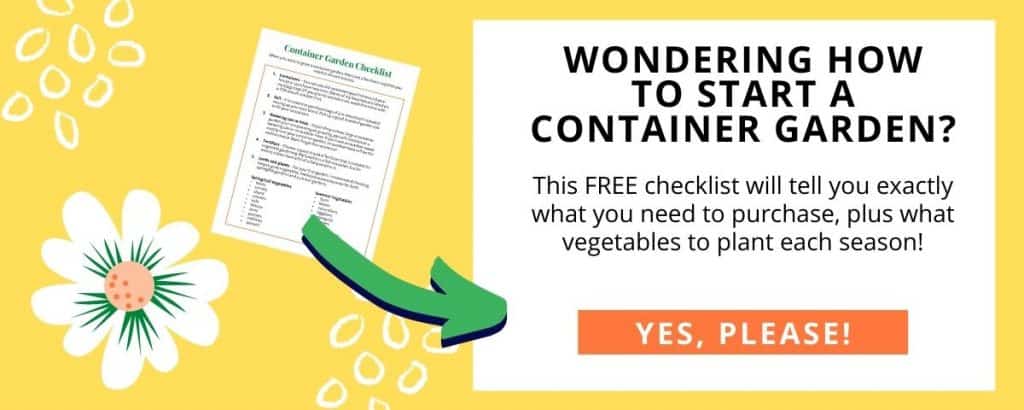
Best Varieties of Eggplant
When it’s time to buy seeds or transplants, don’t think you are limited to the purple pear-shaped eggplants you find in the grocery store. Oh no!
There is a whole world of eggplant varieties waiting to be explored. You can find pure white varieties as well as long, slender, striped almost lavender-colored eggplant. There are even green and orange varieties.
Eggplants also come in a wide range of sizes from small varieties with 2 to 3-inch fruits to large fruits that can weigh in at over 3 pounds.
Patio Baby – This variety is great for growing in containers. The 2-3″ fruits are mild and less bitter than many other varieties. The compact plants produce small, traditionally-shaped dark purple eggplants.
Bride – This is a later-maturing variety that is white with pinkish-purple stripes. (See picture above.) The fruit is long and slender with a curved shape similar to a banana. Some of the eggplants will have more purple and some will be almost white.
Black Beauty – An old heirloom variety that dates back to 1902, Black Beauty is very dependable. The plants produce large, dark purple eggplants in the traditional shape.
Fairy Tale – Another variety suitable for containers, Fairy Tale also does well grown in the ground or raised beds. This variety is a lavender purple color and nearly seedless.
Ping Tung Long – An Asian heirloom variety with long, slender fruits. Ping Tung Long eggplant have lavender-purple coloring and grow to about 10″ long. Resistant to a variety of diseases, it also tolerates hot, humid conditions.
Listada de Gandia – An Italian heirloom variety that has white stripes on a purple base. The sweet flesh is usually free of the bitterness of other varieties.
How to Use Eggplant
Eggplant is used in many Mediterranean dishes. Classic eggplant parmesan is a favorite, but other eggplant dishes include baba ganoush, (a roasted eggplant dip) or ratatouille (a stew made with eggplant, zucchini, peppers, and tomatoes).
But eggplant can also be grilled, baked, air-fried, or sauteed. It is a delicious addition to many pasta recipes too.
Have you ever grown eggplant? If so, I would love to know your favorite varieties.
Related Posts
- How to Start Vegetables from Seed
- Natural Pest Control Methods for Organic Gardening
- 10 Best Vegetables for Beginning Gardeners to Grow
